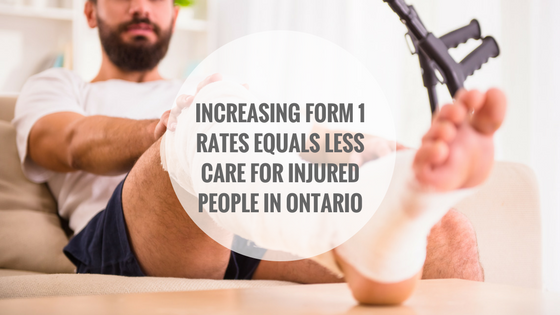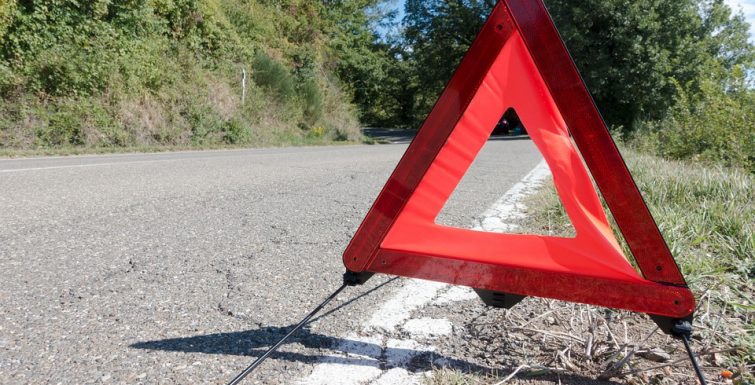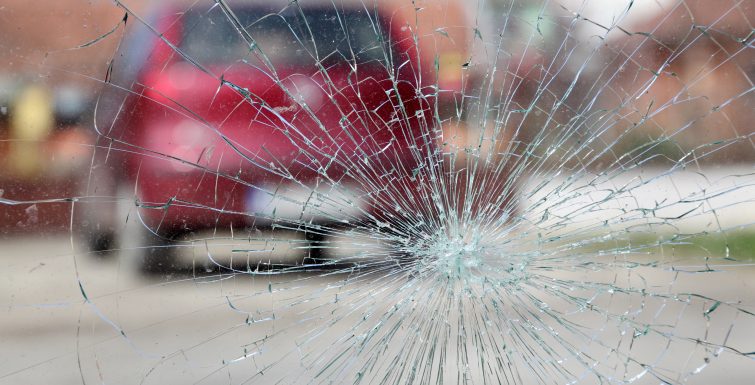Julie Entwistle, MBA, BHSc (OT), BSc (Health / Gerontology)
I can only imagine that the general public is getting overwhelmed and confused by all the recent media, hype and dialogue over the current state of car insurance in Ontario. The sad reality is that until you need your car insurance because you have been injured, you are likely not going to understand it.
But for those of us that work in this sector, understanding, fighting and trying to bring clarity to the challenging opinions of government, third-party consultants and insurers is a daunting task.
My only ask is why can’t the insurance sector be ruled by logic?
Here is my latest example:
If you are injured in a car accident you may need care. This is time other people will spend helping you manage the most basic activities – getting dressed, showering, taking medication, being safe in your home, etc. The monies you have available for this care is calculated through a document completed by an Occupational Therapist (or a nurse). It is actually pretty simple – an occupational therapist does an assessment, calculates the amount of care, and that is the care that can be provided. But here is the lack of logic in how insurer’s and the industry seem to be interpreting this form to the disadvantage of the consumer:
1. There is a cap to the maximum amount you will get anyway. So, if you need $8000 in care per month, you will only get $3000 or $6000 depending on if you have a catastrophic injury or not.
2. If your family wants to provide some care, they can’t get paid any of this money unless they are off work or incur an “economic loss” to provide the care.
3. If your family is suffering an “economic loss” providing the care, they will only be paid the amount per hour of the form, not their actual loss, and the monthly maximum applies.
4. As per a recent “raise” for care providers, the amount that is paid per hour for the services ranges from $14.00 to $21.11 per hour. If your family member was making more than this per hour, it would cause hardship for your family if they decided to provide your care for a lesser rate of pay. So, your option would be to hire help.
5. PSW’s can provide this care, but they are typically $25-$30 / hour. So, the services you need you cannot get because they charge more than the form allows. The result is you get less help than you need because the time runs out faster when you are paying more.
6. If your accident happened before January 1, 2018 then you actually don’t even get today’s minimum wage for your care. You get the minimum wage (or less) for the time that your accident happened. So, if your accident was before October 1, 2003 you are required to find or hire care for $7.00 per hour (see the below rate chart).
7. There are two amounts in the document. The “total” of all the time added up, and the “minute” time calculated for each section. Some (many) insurers are now taking the position that they will pay for the “minute” time, not the “entire time”. So, if I assess you to need 30 minutes per day of care that comes to $210 per month, the insurer will only pay for 30 minutes per day. But PSW companies have minimums so they won’t come to your house for 30 minutes per day – they want 2 hours at the least. But the insurer won’t pay them for 2 hours up to $210, they will only pay for $7.00 per day.
8. Even if you can get your care at the amounts allowed, this will still come from your total claim budget that is also used for rehabilitation. The choice becomes – get care or get better?
All of this to say that the system is not easy to navigate and getting the care you need will prove difficult.
So, what are the options?
Well, if minimum wage is going to continue to increase then it would only seem appropriate that ALL people with an OPEN CLAIM get TODAY’s rates for care – after all, it is today that they need the services – not in the era of their date of loss.
It would also seem appropriate that the maximums for care coverage INCREASE proportionately to the raise in care pricing. So, if $3000 a month was an appropriate maximum in 2003 when the care was at its lowest ($7.00 / hour), then why do we have the same maximum when the care costs have doubled?
Trying some simple math…
If I was eligible for 24-hour care in 2003 at a maximum of $3000, under the Level 2 rate then (see chart) of $7.00 / hour, I could get 14 hours of care (if family was willing to work for that).
If I am eligible for 24-hour care today at a maximum of $3000, under the new Level 2 rates of $14.00 / hour, I get 7 hours of care (if family was willing to work for that).
So, increasing the minimum wage for care providers only makes people get to the maximum more quickly, providing them access to LESS CARE. Thus, in the absence of an increase in the maximum’s allowed, these higher care costs are reducing people’s ability to get the total care they need.
My suggestion is that if the industry could be ruled by logic, then the maximums would increase with the care cost changes. Using an average of care costs, here is where I think the maximums should be:
2003 average ((9+7+15)/3) = $10.33 per hour
2018 average (($14.90+14+$21.11)/3) = $16.67 per hour
% change between 2003 to 2018 = $16.67-$10.33 / $10.33 X 100 = 61%
So, if the hourly rate has increased 61% in 15 years, then wouldn’t logic tell us that the maximums for care should also increase by that same percentage:
$3000 (maximum in 2003) becomes $4830
$6000 (maximum in 2003) becomes $9660
Auto insurers have eroded so much from the customers of Ontario over the last 8 years and while this subtle increase in care costs seem to be provided in “good faith” to align with minimum wage increases, they actually cause people to get less care as they just reach the maximums more quickly. Then, they create significant payment issues when they nickel and dime the form and pay by the minute. Rock meet hard place.
However, I realize fully that even if insurers decided to proportionally increase care maximums as I have suggested, I know this care now comes out of a bigger budget that includes rehabilitation (when before care had its own budget). These budgets are currently $65,000 (was $172,000) and $1,000,000 (was $2,000,000). But the system is currently set-up for people to have “choice” between care and rehabilitation, so I still think the choice should be fair in that at care prices today, the maximums need to be increased.
If insurers really cared about people getting the personal support they need post-accident, they would:
1. Pay today’s rates for everyone with an open claim.
2. Increase the maximums proportionally to the increase in hourly pay.
3. Make it easy for people to get the care – pay to the amount of the form so people can choose to pay a bit more for private services if that is what they need – it all comes out of the same budget anyway, so I am not sure why payment needs to be made difficult too.
The choice is ultimately care or rehabilitation…too bad when our premiums remain high and the outcomes of these losses can be devastating.
For those working in the sector, here is the chart of rates spanning the last 15 years.












